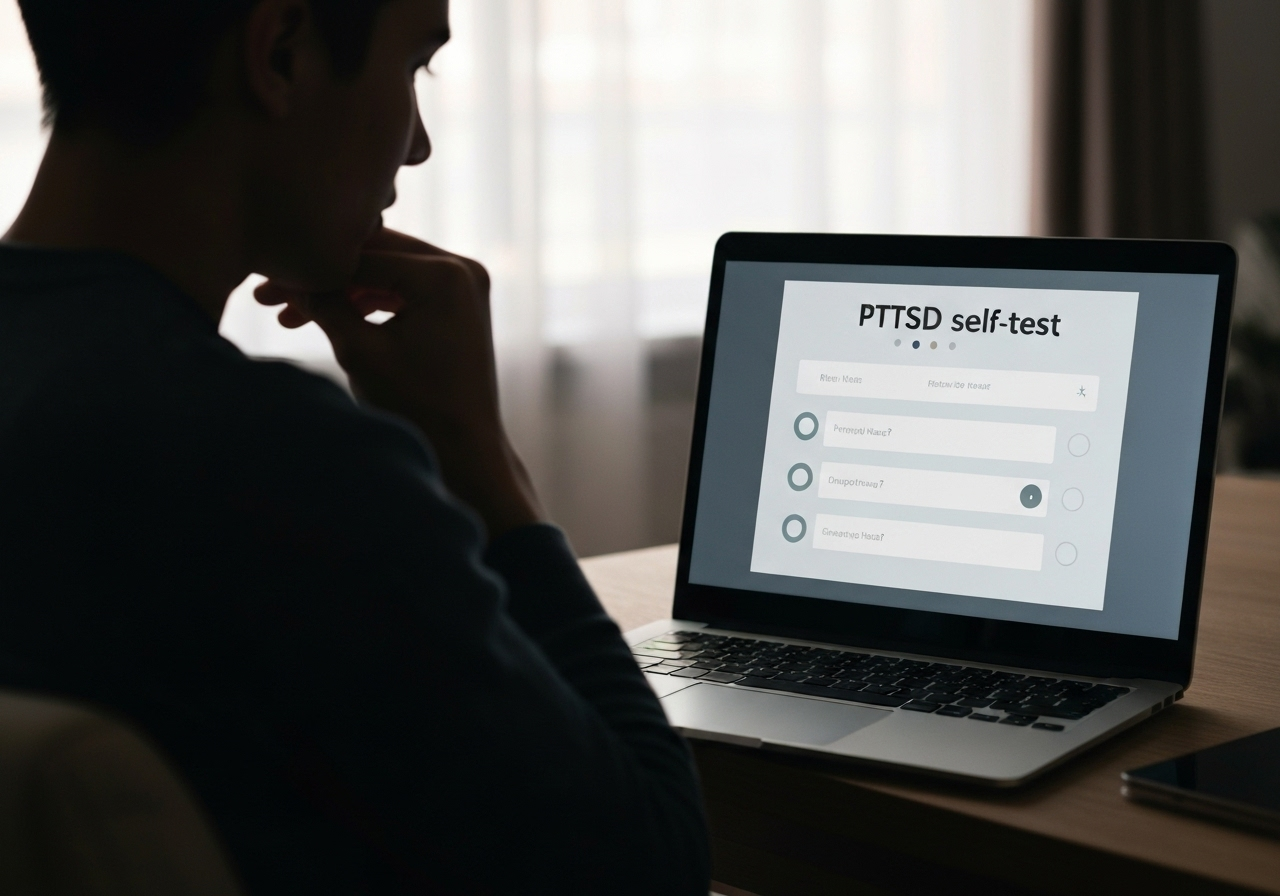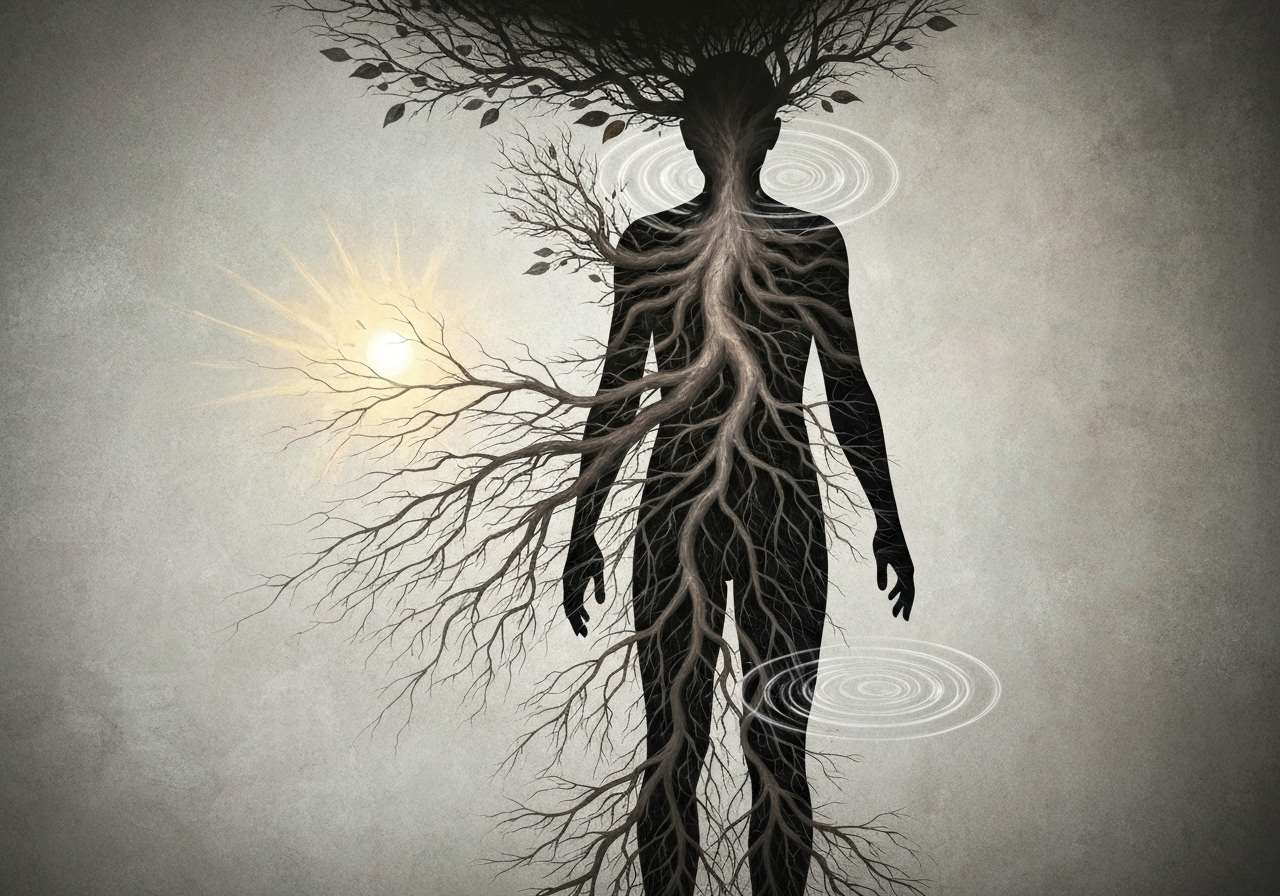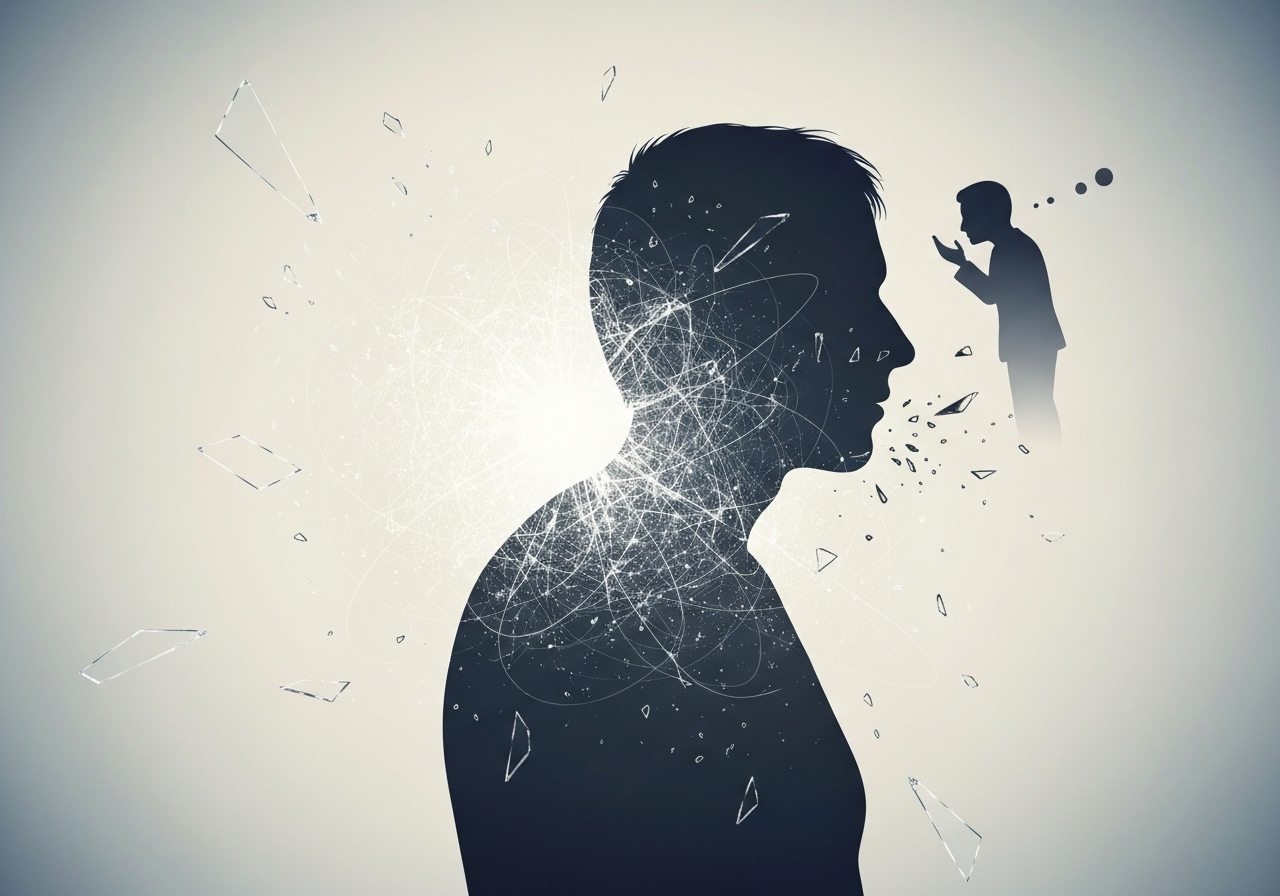Childhood PTSD: Understanding Unresolved Trauma and Taking a Free PTSD Test
Have past experiences left you feeling constantly on edge, struggling in relationships, or wrestling with an inner critic? You might feel like you're navigating life with an invisible weight, a persistent echo from your early years that shapes your present. If this resonates, you're not alone, and understanding the connection between your past and present is the first step toward healing. This article explores how unresolved childhood trauma can manifest as childhood ptsd in adulthood, offering insights and a path to clarity. How do I know if I have trauma from childhood? The journey to answering that question starts with knowledge, and a confidential PTSD self test can be a valuable tool on this journey, providing a structured way to evaluate your experiences.
Understanding your experiences is a powerful act of self-compassion. For a confidential and insightful first step, consider taking an online PTSD test to gain a clearer perspective on your symptoms.

Understanding Childhood Trauma & Its Long-Term Roots
Childhood trauma is not just about single, overt events; it can also be the result of prolonged exposure to a stressful or neglectful environment. These early experiences become deeply ingrained, shaping our developing brains and nervous systems. When this trauma is not processed, it doesn't simply disappear with time. Instead, it can continue to influence our thoughts, feelings, and behaviors well into adulthood, often in ways we don't consciously recognize.
The impact of unresolved trauma is profound because it disrupts our fundamental sense of safety and attachment. As children, we depend on caregivers for security. When that security is threatened by abuse, neglect, or persistent instability, we learn that the world is an unsafe place and that people cannot be trusted. This foundational belief can become the blueprint for our adult lives, creating challenges that seem to come from nowhere.
What Is Childhood Trauma and How Does It Manifest?
So, what does childhood trauma look like? It's a broad term encompassing experiences that are physically or emotionally harmful or life-threatening. These can include physical, emotional, or sexual abuse, neglect, witnessing domestic violence, living with a family member with a substance abuse problem, or the sudden loss of a parent. It can also include less obvious experiences like persistent emotional unavailability from a caregiver or being consistently invalidated.
When these experiences are not resolved, they can manifest in adulthood through a variety of signs. You might experience chronic anxiety, depression, a persistent feeling of emptiness, or difficulty controlling your emotions. Many adults with unresolved childhood trauma struggle with low self-worth, perfectionism, and a harsh inner critic. These are not character flaws; they are often deeply rooted coping mechanisms developed in childhood to survive an overwhelming environment.
From Childhood Trauma to Adult PTSD & cPTSD
While many associate PTSD with soldiers or survivors of a single catastrophic event, trauma experienced over a prolonged period, especially during childhood, can lead to a specific form of PTSD known as Complex PTSD (cPTSD). Standard PTSD often results from a single traumatic incident, with symptoms like flashbacks, nightmares, and severe anxiety.
Complex PTSD, on the other hand, stems from repeated or long-term trauma where escape is difficult or impossible, such as ongoing childhood abuse or neglect. While it includes many symptoms of PTSD, cPTSD is also characterized by difficulties in emotional regulation, consciousness, self-perception, relationships, and one's system of meaning. If you find yourself struggling with deep-seated trust issues, emotional volatility, and a distorted self-image, exploring the possibility of cPTSD could be a critical step. A cPTSD screening tool can help you begin to differentiate your symptoms.

The Lasting Echoes: How Unresolved Trauma Shapes Adult Life
The effects of childhood trauma are like ripples in a pond, extending far beyond the initial event and touching every aspect of adult life. These echoes can be subtle or overwhelming, but they consistently interfere with our ability to feel safe, connected, and fulfilled. Recognizing these patterns is not about placing blame; it's about understanding the "why" behind your current struggles, which is an essential part of the healing process.
Many people feel confused or frustrated by their reactions, wondering why they can't just "get over it." The reality is that the brain and body hold onto trauma, creating automatic responses that were once protective but are now maladaptive. By exploring these impacts, you can begin to connect the dots between your past and your present challenges. Many find that taking an initial online PTSD test helps to formalize this process, providing a clearer picture of how symptoms align with recognized patterns of trauma.
Impact on Relationships & Attachment Patterns
One of the most common areas affected by childhood trauma is our ability to form and maintain healthy relationships. Early experiences with caregivers create an "attachment style" that follows us into adulthood. If your early environment was unsafe or unpredictable, you may have developed an insecure attachment style.
This can manifest as an intense fear of abandonment, causing you to cling to partners, or an equally strong fear of intimacy, leading you to push people away to avoid getting hurt. You might find yourself drawn to chaotic or unhealthy relationship dynamics because they feel familiar. Understanding your attachment patterns is crucial for breaking these cycles and building the secure, loving connections you deserve. If you suspect past relationships have left a mark, a relationship trauma test may offer valuable insights.
Emotional Dysregulation & Self-Esteem Challenges
Do you ever feel like your emotions are a rollercoaster you can't control? This is a hallmark of emotional dysregulation, a common consequence of unresolved trauma. When children are not taught how to soothe themselves or have their feelings validated, they don't develop the skills to manage their emotions effectively. As an adult, this can look like sudden bursts of anger, overwhelming sadness, or persistent anxiety that feels disproportionate to the situation.
Alongside this, childhood trauma often dismantles self-worth. If you were criticized, ignored, or made to feel like a burden, you may have internalized the belief that you are fundamentally flawed. This leads to deep-seated self-esteem challenges, a relentless inner critic, and a constant need for external validation. Healing involves learning to regulate your emotions and rebuild a compassionate relationship with yourself.

Physical Manifestations of Chronic Childhood Trauma
Trauma doesn't just live in the mind; it lives in the body. The constant state of high alert (fight, flight, or freeze) required to survive a traumatic childhood can dysregulate the nervous system, leading to very real physical symptoms in adulthood. This is often referred to as somatic experiencing, where the body holds onto the stress of the past.
These physical manifestations of chronic childhood trauma can include chronic fatigue, digestive issues like IBS, autoimmune disorders, fibromyalgia, and unexplained aches and pains. Many people spend years seeking medical answers for these ailments without realizing they are connected to unresolved trauma. Acknowledging the mind-body connection is a vital part of a holistic healing journey.
Recognizing the Signs & Taking Your First Step Towards Healing
Acknowledging that your past may be impacting your present is a brave and significant step. It can feel daunting, but it is also the beginning of empowerment. You are no longer letting the past dictate your life unconsciously; you are choosing to understand it, process it, and move forward with intention. The journey of healing from childhood trauma is not about erasing the past but about integrating it in a way that it no longer controls your future.
This process often starts with a simple act of validation: confirming that what you are experiencing is real and has a name. Self-assessment tools, used responsibly, can provide this crucial first piece of the puzzle, giving you the language and framework to understand your inner world.
When to Consider a Childhood PTSD or cPTSD Test
If you recognize yourself in the descriptions above—struggling with relationships, emotional volatility, low self-worth, or unexplained physical symptoms—it may be time to consider taking a specialized PTSD test designed to screen for these complex symptoms. A test is not a diagnosis, but it is a powerful information-gathering tool. It can help you organize your experiences and see patterns you might have missed.
A confidential self-assessment can provide a low-pressure starting point, especially if you're not ready to speak with a professional. It gives you a private space to be honest with yourself about your symptoms. The results can serve as a bridge, offering you the clarity and confidence needed to take the next step, whether that's further research, self-help strategies, or seeking professional support. You can start your assessment here.
The Power of Self-Assessment: Your Journey to Understanding Begins Here
Taking a self-assessment is an act of taking back control. For too long, the echoes of trauma may have made you feel powerless. By seeking to understand your symptoms, you are shifting from a reactive state to a proactive one. This is where the journey to healing truly begins. An online assessment provides immediate, data-driven feedback based on your own input.
Our platform provides a free, confidential, and scientifically-based test designed to help you understand your symptoms in the context of PTSD and cPTSD. The results can offer a snapshot of what you're experiencing, providing personalized insights that can illuminate your path forward. This journey of understanding is yours to take, and it starts with this courageous first step. Discover your results today.

Understanding Your Past, Empowering Your Future
Recognizing the signs of childhood PTSD is not about dwelling on the past but about liberating your future. Understanding how unresolved trauma has shaped your relationships, emotions, and even your physical health is the key to breaking free from old patterns. It allows you to approach yourself with compassion rather than judgment and to seek the support you have always deserved.
Your experiences are valid, and your feelings are real. Taking the first step toward understanding them can feel like turning on a light in a dark room. It may be intimidating at first, but it is the only way to see the path forward clearly.
Ready to gain clarity? Take the free, confidential, and science-based PTSD Test on our homepage. It’s a powerful first step on your journey to understanding and healing.
Frequently Asked Questions About Childhood Trauma & PTSD
How do I know if I have trauma from childhood?
Common signs of unresolved childhood trauma in adults include difficulty in relationships, intense emotional reactions, chronic anxiety or depression, low self-esteem, and a persistent feeling of being "on guard." You may also notice physical symptoms like chronic pain or fatigue. A structured self-assessment, like an online trauma test, can help you identify if your symptoms align with those of PTSD or cPTSD.
What is the difference between PTSD and cPTSD related to childhood experiences?
PTSD typically arises from a single traumatic event and is characterized by re-experiencing, avoidance, and hyperarousal. cPTSD (Complex PTSD) results from prolonged or repeated trauma, such as ongoing childhood abuse. In addition to PTSD symptoms, cPTSD includes difficulties with emotional regulation, self-concept, and relationships, which is why it's crucial to use a test that can help screen for these complexities.
Can childhood PTSD symptoms go away on their own?
While some people develop effective coping mechanisms, the core symptoms of childhood PTSD and cPTSD rarely resolve completely without conscious effort and support. The trauma remains stored in the nervous system, and triggers can bring symptoms back unexpectedly. Proactively seeking understanding through tools like a free PTSD test and eventually seeking professional therapy are the most effective paths to long-term healing.
How accurate are online PTSD tests for childhood trauma?
Reputable online PTSD tests, especially those based on clinical standards like the PCL-5, can be highly accurate as screening tools. They are designed to identify symptoms consistent with PTSD and cPTSD. While they are not a substitute for a professional diagnosis from a qualified therapist or doctor, they provide an excellent, confidential, and data-driven starting point to understand your experiences and decide on the next steps.